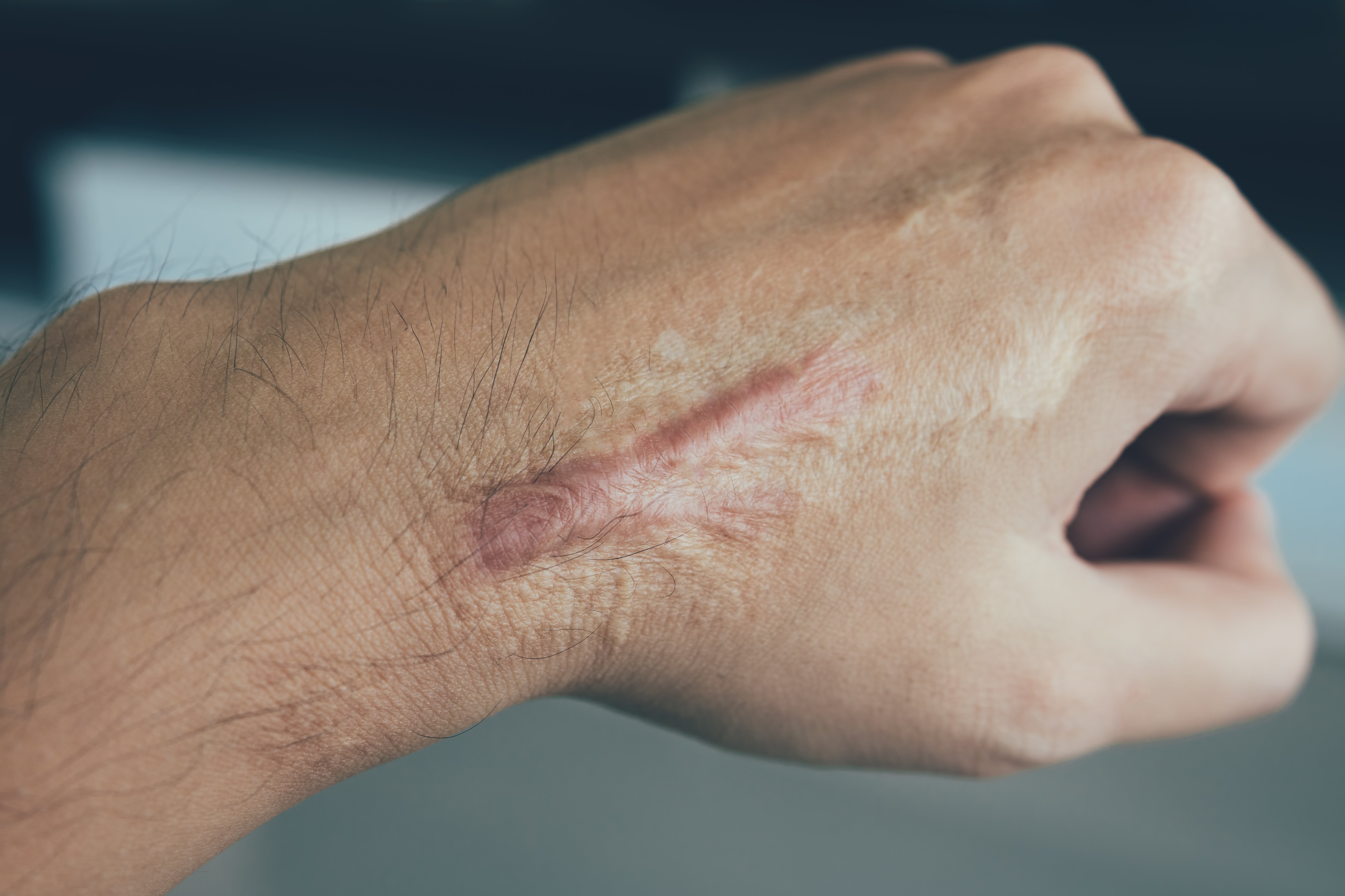
(Vienna, 31 March 2022) A research team at MedUni Vienna has studied the development of keloids - tumour-like scarring of the skin - and has discovered significant involvement of Schwann cells in their growth. This opens up a new potential therapeutic approach, with targeted treatment directed specifically at these cells. The results of the study were recently published in the journal Matrix Biology.
Keloids are tumour-like scars on the skin, which continue to grow beyond the margin of the original wound. They can occur after even minor injuries, such as an insect bite, and can place a heavy physical and psychological burden on patients due to pain and restricted movement. Current treatment options for keloids are limited and often lead to regrowth, even after surgical removal. Despite decades of research, no specific cause has yet been identified for the development of keloids. The role played by Schwann cells, glial cells of the peripheral nervous system, in the development of keloids has now been investigated in greater detail by a research team led by Michael Mildner (Department of Dermatology) and Hendrik Jan Ankersmit (Department of Thoracic Surgery) at MedUni Vienna.
Special type of Schwann cell in keloids
In a healthy organism, Schwann cells ensheath the peripheral nerves and support the transmission of stimuli. Following a traumatic injury, these can transform into repair Schwann cells, driving the regeneration of damaged nerves. In the present study, the researchers found that there was an unusually high number of a specific type of Schwann cell, with a similar phenotype, in keloids. "Without any contact with nerves, these Schwann cells pervade the entire dermis and exhibit a pro-fibrotic expression pattern that contributes to the formation of the keloid," explains the study's lead author Martin Direder from MedUni Vienna's Department of Thoracic Surgery. Moreover, by releasing or inhibiting various signalling substances, these Schwann cells interact with macrophages (scavenger cells), with the result that these are unable to fully break down the extracellular matrix and at the same time inhibit the differentiation of the Schwann cells.
The results of this study suggest significant involvement of Schwann cells in the growth of keloids, which means that a targeted treatment specifically directed at these cells could be an interesting new therapeutic option.
The study was carried out with the support of Aposcience AG, the Austrian Research Promotion Agency, the Vienna Business Agency and the Federal Ministry of Education, Science and Research's Sparkling Science Programme.
Service: Matrix Biology
Matrix Biology: Schwann cells contribute to keloid formation. Martin Direder, Tamara Weiss, Dragan Copic, Vera Vorstandlechner, Maria Laggner, Karin Pfisterer, Caterina Selina Mildner, Katharina Klas, Daniel Bormann, Werner Haslik, Christine Radtke, Matthias Farlik, Lisa Shaw, Bahar Golabi, Erwin Tschachler, Konrad Hoetzenecker, Hendrik Jan Ankersmit, Michael Mildner
https://doi.org/10.1016/j.matbio.2022.03.001